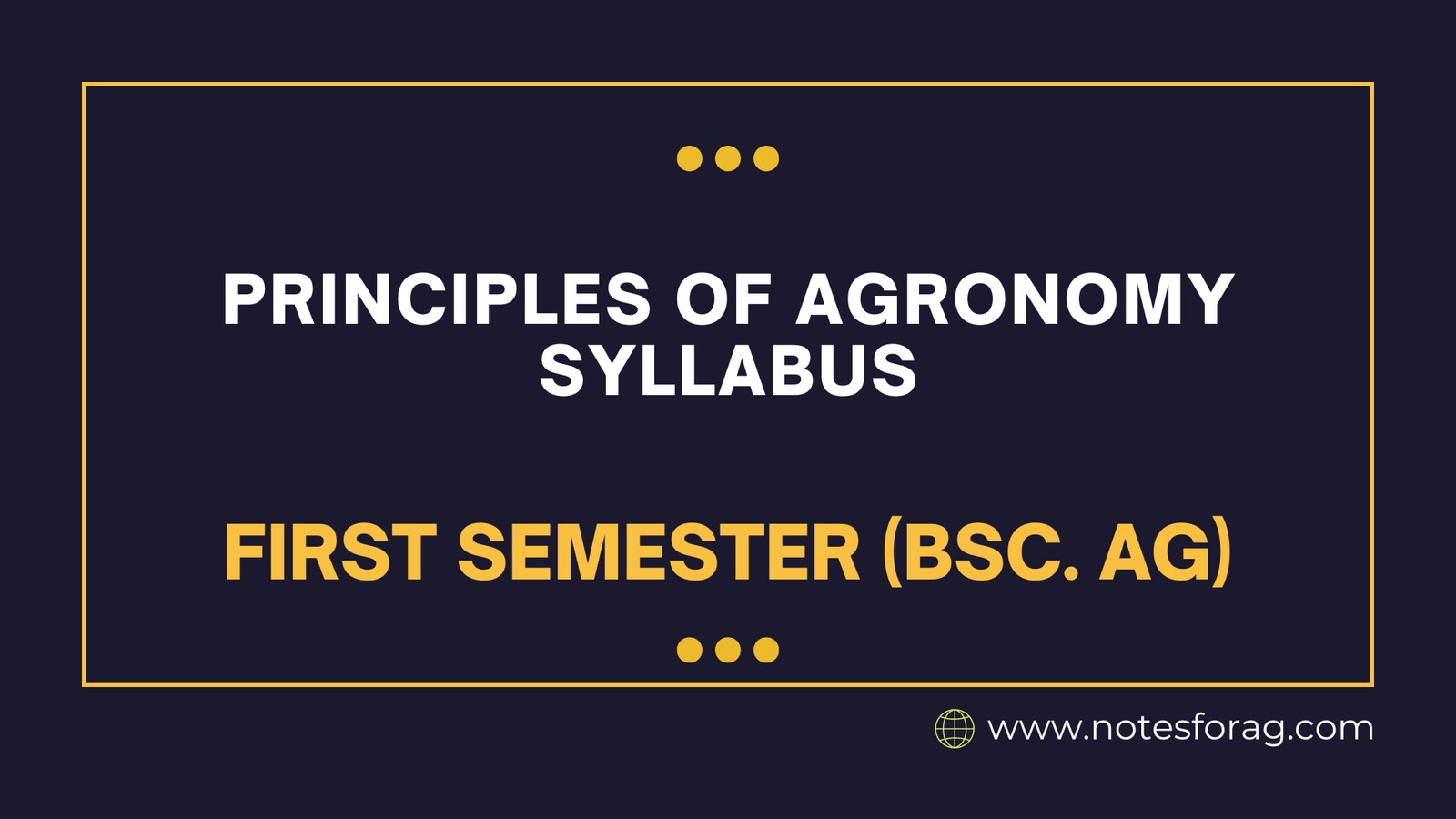Course Code AGR 101 Course Title Principles of Agronomy Credit Hour 3(2+1) Full Marks 75 Theory 50 Practical 25
Objectives
Upon the completion of this course, the students will be able to explain soil and climatic factors in relation to increasing field crop productivity and the basic principles underlying successful crop production.
Syllabus of Principles of Agronomy in Bsc. Agriculture Overview of agriculture and agronomy, weather and climate, tillage, seed and seed quality, cropping system, soil fertility and soil productivity, soil erosion, weed management, irrigation and drainage, crop ideo-type, and crop density in relation to successful field crop production.
Course Outline
A. Theory
S.N Topic / Chapter Name No. of Lectures .1 Overview of Agriculture and Agronomy Definition of Agriculture and Agronomy, subsistence and commercial agriculture, Green Revolution Relationship of Agronomy to other sciences, the role of Agronomist in solving food problems and food security of Nepal. Classification of Agronomical crops based on growing season, Agronomic and special purpose classification 3 2 Weather and climate Definition of weather, climate, microclimate, meteorology, and agro meteorology Elements of climate: Solar radiation and temperature and their effects on crop growth 2.3 Precipitation, relative humidity, and wind and their effects on crop growth 3 3 Tillage Definition, history, the objective of tillage, soil tilth Conventional and conservation tillage and their advantages and disadvantages 3 4 Seed and Seed quality 4.1 Definition of seed and seed technology, Characteristics of quality seed and its importance Different classes of seed, seed germination, and dormancy seed certification methods in Nepal 3 5 The cropping system 5.1 Definition of sole crop, monoculture, cropping pattern, Definition and method to calculate cropping index, cropping 2 6 Soil fertility and soil productivity 6.1 Soil fertility and soil productivity, criteria of essentiality of Manures: the importance of organic manures, classification and Fertilizers: Classification of fertilizers, Nitrogenous, Phosphatic Biofertilizers: Saprophytes, Symbiotic bacteria, Blue green algae, Factors affecting fertilizer use, time, and methods of fertilizer 5 7 Weed management 7.1 Definition, losses, and benefits of weeds Classification and management of weeds, prevention, eradication Physical, Cultural, Biological, and chemical methods of weed 3 8 Irrigation and drainage 8.1 Role of water, Water requirement, definition, and objectives 4 9 Soil erosion 9.1 Definition of soil erosion, types of water erosion, factors affecting Wind erosion, types, factor affecting, losses and control 2 10 Crop ideotype and crop density 10.1 Ideotype concept, traits for ideotype, characteristics ideotype 2 Total 30
B. Practical
S.N Topic / Chapter Name No. of Lectures .1 Collection and identification of seeds field crops. 1 2 Seed purity and germination test 1 3 Seed rate calculation based on germination and purity and real value of seed 1 4 Field preparation and planting of seasonal field crops 1 5 Identification and nutrient contents of common manures and fertilizers 1 6 Calculation of fertilizers and manures 1 7 Methods of fertilizer applications in field crops. 1 8 Identification of common weeds and weed control of field crops 1 9 Weed collections and preparations of weed herbarium 1 10 Identification of herbicides and herbicide formulations 1 11 Calculation of herbicides for application 1 12 Study of cropping systems of nearby farms 1 13 Calculation of cropping intensity, cropping index, and land equivalent ratio 1 14 Visit NMRP, NGLRP, and Agronomy farm of AFU 1 15 Yield attributes and yield estimation of seasonal field crops 1 Total 15
References
S.R. Reddy.2007.Principles of Agronomy. Kalyani Publishers. Ludhiana. Third revised edition. T. Y. Reddy and G.H. S. Reddi.1997. Principles of Agronomy. Kalyani Publishers. Ludhiana. Second revised edition. R.M. Lantican.2001. The Science and Practices of Crop Production. SEAMEO SEARCA. UPLB. Philippines Publication. K. P. Sharma, K.R. Dahal and K. R. Neupane.1991. An Introduction to Agronomy. IAAS, Rampur, Chitwan. Publication.

